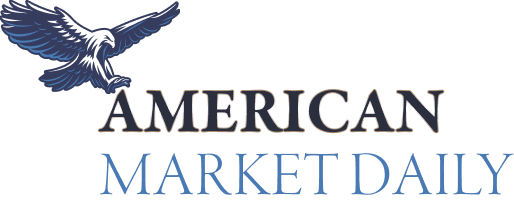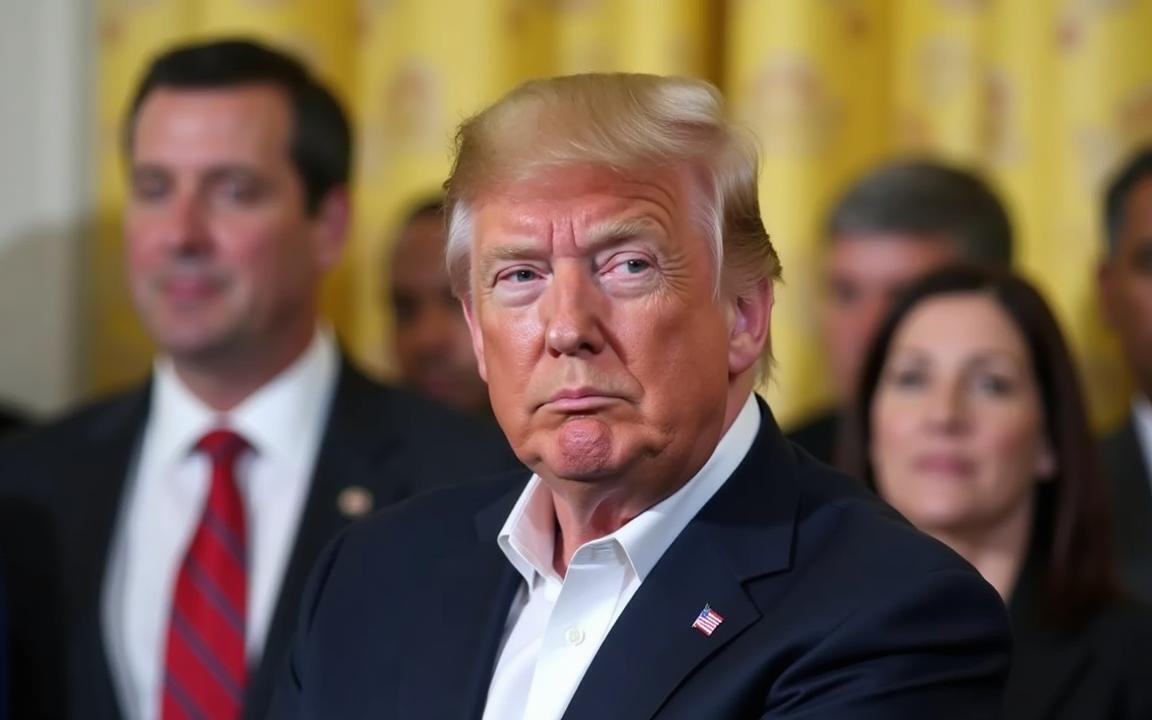The United States stands at a crossroads as President Donald Trump’s sweeping tariff plan, unveiled this week, sends shockwaves through financial markets and reignites recession fears.
With the stock market reeling from significant losses and global leaders hinting at retaliation, the Federal Reserve faces a complex challenge.
Federal Reserve Chair Jerome Powell’s cautious stance—maintaining the benchmark interest rate at 4.25% to 4.5%—reflects a central bank wrestling with dual threats: a potential economic downturn and persistent inflation exacerbated by Trump’s trade policies.
As Trump pressures the Fed to cut rates to cushion the economy during what his administration calls a “detox period,” economists are divided on the wisdom of such a move.
The tariff trigger and market turmoil
Trump’s tariff announcement, labeled “Liberation Day” in a Truth Social post on April 2, 2025, introduced a plan described as much bigger than expected.
This policy shift has sparked widespread concern, with the stock market tanking this week, a development attributed to recession fears by James Glassman, a former economist with JPMorgan Chase.
Trump’s tariffs will likely cause consumers to reduce spending due to higher taxes on goods, a factor Powell acknowledged on Friday as having greater effects on inflation and growth.
Additionally, workers are increasingly worried about layoffs, influenced by the spectacle of sweeping federal workforce cuts led by Elon Musk’s team at the Department of Government Efficiency.
Businesses, too, are expressing uncertainty and pulling back from investments, amplifying economic unease.
The global response remains unclear, but the prospect of retaliatory measures looms large, adding to the pressure on the US economy.
Powell’s Friday remarks at a business journalists’ conference in Arlington, Va., underscored the tariffs’ unexpected scale, noting their potential to disrupt economic stability.
This situation has shifted the Fed’s focus, with Glassman arguing that recession fears have overtaken inflation as the central bank’s primary concern, a perspective that has intensified the current market volatility.
The Fed’s current stance: cautious restraint
The Fed’s benchmark interest rate, set at 4.25% to 4.5%, is considered “modestly restrictive” by Powell, a deliberate strategy to address inflation, which he described as stubbornly high.
This rate exceeds the historical norm of around 3%, a level Powell has identified as typical for economic growth.
The central bank’s approach reflects its ongoing effort to manage price pressures, a challenge that has persisted since inflation last met the 2% target in 2021, with new projections suggesting it may not return to that goal until 2027.
Powell’s comments on Friday suggest a deliberate pace.
We don’t have [a Federal Open Market Committee] meeting until May 6 and 7. We’re kind of thinking ahead to that and working through all of that. I will say, though, you know, it feels like we don’t need to be in a hurry.
This cautious tone reflects the long lags in monetary policy effects, which economists estimate can take months to impact the economy.
The next meeting, scheduled for mid-June, provides another opportunity for review, but Powell emphasized the need to ensure any tariff-driven inflation does not become persistent, indicating a wait-and-see approach.
Financial markets, however, are signaling a different urgency.
The markets have penciled in four rate cuts starting in June, with the odds of a May move rising as the stock market declined this week.
This market sentiment contrasts with Powell’s reluctance, highlighting a tension between investor expectations and the Fed’s measured strategy.
The tariff dilemma: inflation vs. recession
Trump’s tariffs present a significant dilemma for the Fed.
The policy is expected to boost inflation immediately, with many suggesting it could push prices above the current level, a concern Powell addressed on Friday.
This potential rise complicates the Fed’s efforts to maintain price stability, especially given the 2% target remains out of reach.
After consumers face higher prices, growth will slow, and inflation may subsequently decline, creating a cyclical challenge for monetary policy.
This scenario forces the Fed to choose between responding to higher inflation or protecting the economy from a possible recession.
Krishna Guha of Evercore ISI noted that Powell’s remarks underline the absence of conditions for a “Fed put”—the notion that the Fed will intervene to support a falling stock market.
Guha suggested Powell has positioned the Fed to cut rates if unemployment rises materially, but the current economic indicators remain unclear on this front.
Joe LaVorgna of SMBC Nikko Securities America argued that in normal times, the Fed might consider pre-emptive moves to prevent an economic downturn, but inflation’s persistence currently precludes such action.
The White House, through economic adviser Kevin Hassett, frames the situation differently.
In a recent Fox Business Network interview, Hassett suggested the economy is doing well, with long-term rates coming down and inflation having eased, predicting a shift to “cruise control” over the next few meetings.
This optimism contrasts with the tariff-induced pressures, leaving the Fed to navigate a complex interplay of growth and price concerns.
Trump’s pressure and historical context
Trump’s call for immediate rate cuts echoes his past criticisms of Powell, a dynamic that has long unsettled economists due to his disregard for the Fed’s independence.
Francesco Bianchi of Johns Hopkins University, who has studied Trump’s tweets from his first term, offered a historical perspective.
He suggested that in hindsight, Trump’s 2018 push to keep rates low might have been correct, as the Fed later reversed its rate hikes in 2019 after moving toward the 3% norm.
Bianchi noted that Trump’s motivation was to pressure trading partners like the euro zone, but he warned that current calls for easing could jeopardize the Fed’s credibility if inflation spirals, a risk even detrimental to Trump’s administration.
Trump’s recent Truth Social post on April 2, 2025, reinforces his stance:
The Fed would be MUCH better off CUTTING RATES as US Tariffs start to transition (ease!) their way into the economy.
This pressure highlights his impatience, a theme consistent with his earlier tenure, and places the Fed in a politically charged position as it considers its next steps.
Options for the Fed: cut, hold, or hike?
The Fed’s decision-making process is shaped by these competing pressures, with three potential paths emerging:
- Rate cuts: Glassman argued in an email that the case for lowering rates is compelling given the potential headwinds, suggesting the Fed has room to reduce its benchmark rate. This aligns with market expectations of four cuts starting in June, potentially addressing recession fears. However, continuing concerns over inflation, as noted by Powell and LaVorgna, pose a significant barrier, risking a loss of control over prices.
- Hold steady: Powell’s current approach favors maintaining the 4.25% to 4.5% range until at least May, allowing time to assess the tariffs’ full impact. This stance reflects the long lags in policy effects and the need to avoid hasty moves, as Powell suggested.
- Rate hike: While less likely, a rate increase could be considered if inflation surges due to tariffs, a scenario Powell emphasized on Friday. This would prioritize price stability, but recession concerns suggest such a move could deepen economic challenges, conflicting with the Fed’s employment goals.
Economic indicators and global ripples
Unemployment concerns are rising, driven by layoffs linked to federal cuts and business uncertainty.
Consumer spending is likely to decline as tariffs raise prices, a dynamic Powell noted as a growth risk.
Globally, the threat of retaliatory tariffs adds complexity.
Powell’s Friday statement, “We face a highly uncertain outlook with elevated risks of both higher unemployment and higher inflation,” captures the Fed’s challenge in this volatile environment.
The Fed’s credibility at stake
The Fed’s independence is a critical issue, as Trump’s public demands risk politicizing monetary policy.
Bianchi’s warning about the dangers of losing control over inflation underscores the stakes, noting that credibility is essential for consumer trust and the central bank’s effectiveness.
Powell’s strategy of waiting for clearer data, as expressed on Friday, aims to preserve this autonomy, but the market’s push for cuts tests his resolve.
A delicate balancing act
As of April 6, 2025, the Fed faces a delicate balancing act.
Powell’s cautious stance suggests a hold through the May 6-7 meeting, with a potential reassessment in mid-June if recession signals strengthen.
Glassman’s case for rate cuts reflects market sentiment and the need to address growth concerns, but inflation’s persistence, as Powell and others note, argues against haste.
Trump’s tariff salvo has shifted the economic narrative toward growth preservation, yet the Fed’s 2% inflation target remains elusive.
The central bank must navigate this uncertainty with precision, resisting political pressure while safeguarding the economy.
The May meeting will be a critical juncture, with the long lags of monetary policy ensuring that the Fed’s next move will have a lasting impact.
The post Can the Fed tame Trump’s tariff tempest with a rate cut gamble? appeared first on Invezz




